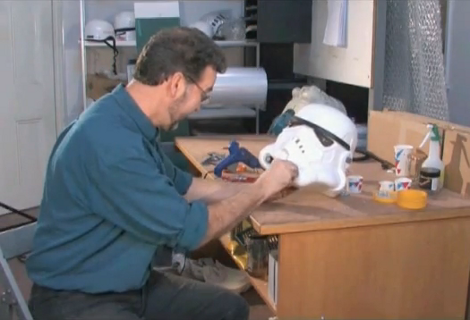
[Andrew Ainsworth] has been making and selling costumes based on Star Wars character (some original, and some of his own creation) for several years. Lucasfilm sued him for $20 million back in 2004 claiming infringement of intellectual property rights. He stopped selling them in the US (as it was a US copyright) but now the UK Supreme Court has ruled in his favor, siding with his claim that the costumes are functional items and not works of art.
Good for him, but copyright issues aren’t what interests us here. The BBC clip showing him using a vacuum former to make the Stormtrooper helmet really caught our attention. A bit of further searching led us to find the thirteen minute video after the break showing the entire process, from sculpting the mold by hand, to forming the components, and the final assembly seen above. It’s a fascinating process that makes use want to build our own vacuum former (preferably on a larger scale than this one). It would come in handy whether it’s Star Wars, Daft Punk, or any number of other projects you’ve got in mind.
Continue reading “Making And Selling Star Wars Costumes Ruled To Be Legal”
















